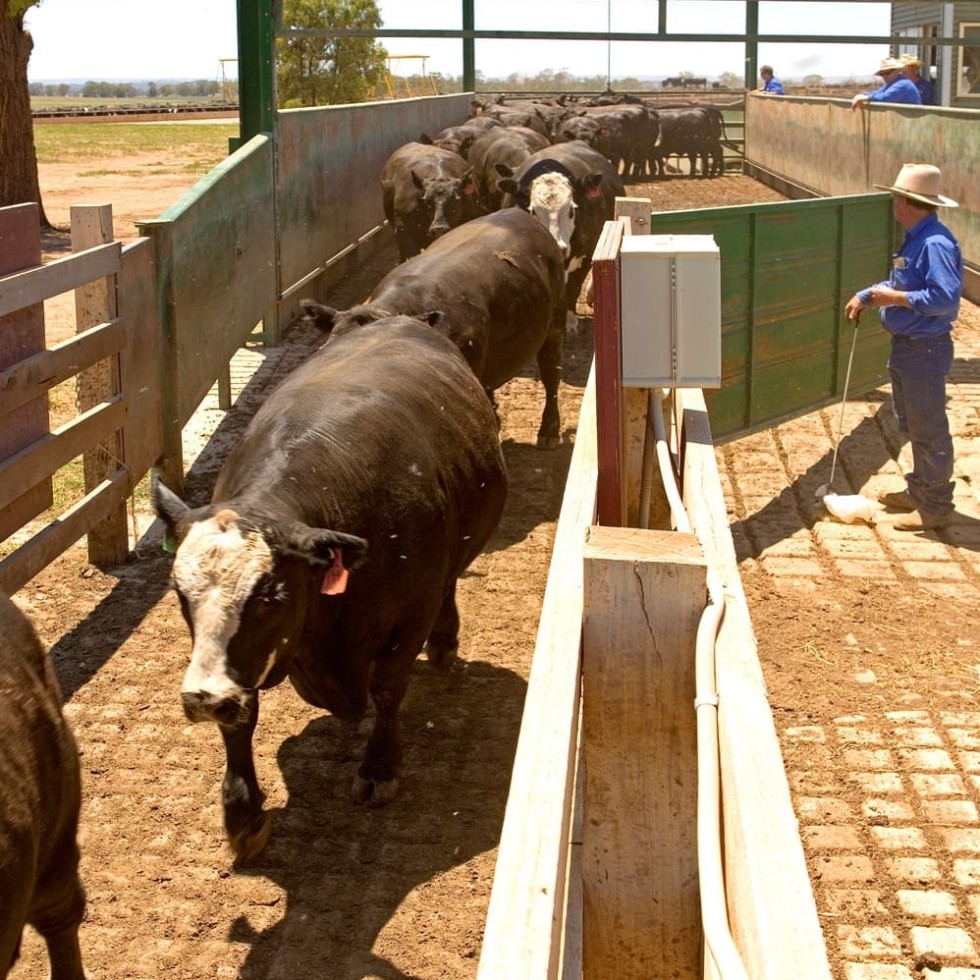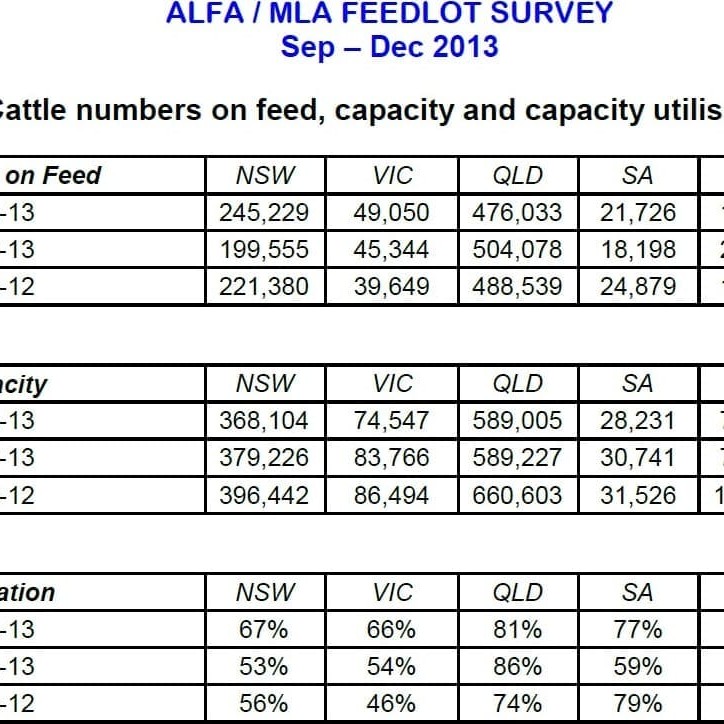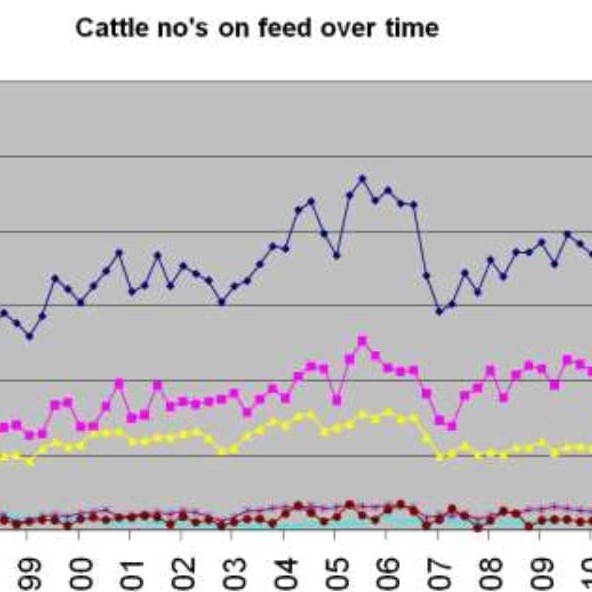 Drought-forced placement of cattle onto grainfeeding programs has kept numbers on feed at a high level, with a total of 810,000 head reported under management in Australian feedlots at the end of December.
Drought-forced placement of cattle onto grainfeeding programs has kept numbers on feed at a high level, with a total of 810,000 head reported under management in Australian feedlots at the end of December.
The number reported in the latest quarterly industry survey issued this morning is up 3 percent from the previous survey conducted by MLA and ALFA at September 30 last year. It’s only the second time since 2006 that numbers on feed across Australia have exceeded 800,000 head.
Australian Lot Feeders Association president Don Mackay was not surprised by the result, given the ongoing dry conditions which had driven larger numbers of grassfed cattle into the feedlot system in order to keep them alive or in marketable condition.
“Nobody in agriculture likes drought, but it is nonetheless a harsh reality that it occurs. One advantage of the feedlot production system is that cattle health, welfare, productivity, beef supply and eating quality is unaffected during such times,” he said.
Increases in cattle numbers on feed were reported in NSW, Victoria and South Australia as drier conditions began affecting pasture quality in southern parts of the continent. Compared with the previous quarter, NSW numbers were up a massive 23 percent to 245,000 head; Victoria +8pc to 49,000 head, and SA +19pc to 22,000 head.
More surprising was the report suggesting cattle numbers on feed actually reduced by 5.6pc in Queensland over the quarter to December 30.
Report authors suggested dry conditions increased grain and roughage prices was part of the reason, although grain prices did not really start to take off until well into January. Also negatively impacting on the Queensland result was quality and quantity of suitable feeder cattle, the report suggested.
Queensland was reported to have about 476,000 head on feed at December 30, about 30,000 head below the previous quarter.
Mr Mackay said average feedgrain prices were up 9pc year-on-year for the Darling Downs while domestic feeder cattle prices declined 4c for the quarter and 16c year-on-year. Similar broader trends are clearly identified in Beef Central’s fortnightly 100-day grainfed trading budget (click here to view latest report).
Meat & Livestock Australia’s market information and analysis manager, Tim McRae said grainfed beef exports were up 10pc for the 2013 calendar year, with declines in Japan and Korea offset by significant increases to most other markets, including China, the Middle East and the EU.
Total grainfed beef exports for 2013 into Japan and Korea declined by 6pc and 1pc compared to 2012, to 116,383t and 31,020t respectively.
However, grainfed exports into China increased by nearly five times and were almost double into the EU and the Middle East (to 20,500t, 11,500t and 10,400t respectively).
Questions continue to be raised about the reliability of the quarterly grainfed survey figures. One industry participant closely aligned with the feedlot industry found it hard to accept that pen occupancy in Queensland was only 81pc by December30, well before the recent rise in feedgrain price.
“It’s hard to believe, to suggest there was about 113,000 head of unutilised feedlot space in Queensland at the end of December, in the middle of a raging drought. Pen space is as scarce as hen’s teeth. We know that the capacity figure includes very small feedlots, but the report suggests the biggest drop in capacity has been in lots between 1000 to 10,000 head in size,” he said.
Despite the strong level of feeding activity over the past 12 months, the latest quarterly report suggests that the nation’s overall licensed feedlot capacity has fallen by almost 140,000 head, year-on-year, representing a decline of 11pc in national feeding capacity.
The December industry-wide capacity figure was 1.137 million head, with biggest state falls suggested in Queensland (minus-70,000 head); NSW (minus-30,000 head), WA (minus-25,000 head) and Victoria (minus-12,000 head).


